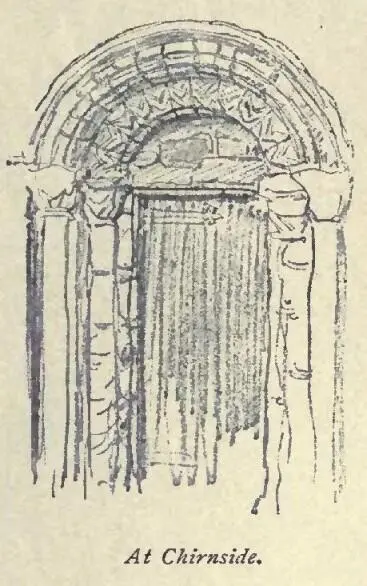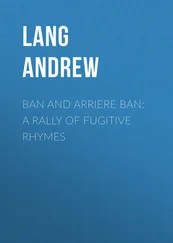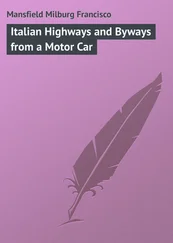Andrew Lang - Highways and Byways in the Border
Здесь есть возможность читать онлайн «Andrew Lang - Highways and Byways in the Border» — ознакомительный отрывок электронной книги совершенно бесплатно, а после прочтения отрывка купить полную версию. В некоторых случаях можно слушать аудио, скачать через торрент в формате fb2 и присутствует краткое содержание. Жанр: foreign_antique, foreign_prose, на английском языке. Описание произведения, (предисловие) а так же отзывы посетителей доступны на портале библиотеки ЛибКат.
- Название:Highways and Byways in the Border
- Автор:
- Жанр:
- Год:неизвестен
- ISBN:нет данных
- Рейтинг книги:4 / 5. Голосов: 1
-
Избранное:Добавить в избранное
- Отзывы:
-
Ваша оценка:
- 80
- 1
- 2
- 3
- 4
- 5
Highways and Byways in the Border: краткое содержание, описание и аннотация
Предлагаем к чтению аннотацию, описание, краткое содержание или предисловие (зависит от того, что написал сам автор книги «Highways and Byways in the Border»). Если вы не нашли необходимую информацию о книге — напишите в комментариях, мы постараемся отыскать её.
Highways and Byways in the Border — читать онлайн ознакомительный отрывок
Ниже представлен текст книги, разбитый по страницам. Система сохранения места последней прочитанной страницы, позволяет с удобством читать онлайн бесплатно книгу «Highways and Byways in the Border», без необходимости каждый раз заново искать на чём Вы остановились. Поставьте закладку, и сможете в любой момент перейти на страницу, на которой закончили чтение.
Интервал:
Закладка:
A cairn each has been, without doubt, or rather a quarry, from which material for neighbouring farm buildings has been ruthlessly torn. Of Blanerne, I believe the Keep still exists, as well as some other remains, to tell of what has been; but Billie Castle is now little more than a green mound at foot of which runs a more or less swampy burn, with here and there a fragment of massive wall still standing; whilst Bunkle is a mere rubble of loose stones. AH these were destroyed in Hertford's raid in 1544, when so much of the Border was "birnd and owaiertrown."
More ruthless than Hertford's, however, was the work at Bunkle of our own people in 1820. They pulled down an eleventh century church in order to build the present edifice. Only a fragment of the original building remains, but many of its carved stones may be seen in the walls of the existing church. Possibly the old structure was in a bad state of repair. One does not know for certain; but at date of its demolition the building appears to have been entire.
Our ancestors of a hundred years ago were not to be "lippened to" where ecclesiastical remains were concerned. They had what amounted to a passion for pulling down anything that was old, and where they did not pull down, they generally covered with hideous plaster any inside wall or ornamental work, which to them perhaps might savour of "papistry." Parish ministers, even late in the eighteenth and early in the nineteenth centuries, appear to have taken no interest in those beautiful Norman remains, numerous fragments of which even now exist in Berwickshire; of all those ministers who compiled the old Statistical Account of this county, but one or two make any mention of such things. One fears, indeed, that to some of those reverend gentlemen, or to others like them of later date, we are indebted for the destruction of priceless relics of the past. At Duns, for instance, as late as 1874 the original chancel of an old Norman church was pulled down by order of the incumbent, "to improve the church-yard." Then, as already mentioned, there is Bunkle, an instance of very early Norman work, pulled down in 1820. At Chirnside, the tower of its Norman church was sacrificed in 1750. though great part of the old church walls remain; in the south side is a Norman doorway six feet ten inches in height to the lintel and two feet ten and three-quarter inches wide. Of Edrom church, a very beautiful Norman doorway, said to be "the finest of its style in Scotland," has been preserved, entirely owing, apparently, to the fact that it had been made the entrance to a burial vault. At Legerwood, near Earlstoun, where stands the chancel of a Norman church, the arch is still entire but is defaced with plaster. Berwickshire, however, is not the only part of the Border where such things have been done.

Higher up Tweed, at Stobo in Peeblesshire, there is an interesting old church of Norman structure, with sixteenth and seventeenth century alterations; roof and interior fittings are modern, and the building is still used as the Parish Church. Sixteenth and seventeenth century alterations have now at least age to commend them, but it is difficult to see what plea can be advanced for some of those of comparatively recent date. According to "Ecclesiastical Architecture of Scotland," the most serious injury inflicted on the building was the entire destruction of the Norman chancel arch, in order to insert a modern pointed one, at the restoration of the church in 1868.
Over in Teviotdale, too, the same passion for altering, or for sweeping away relics of old times, ran its course. In 1762, the Town Council of Hawick gave orders for the destruction of the Town's Cross. So Popish a thing as a Cross could not be tolerated by those worthy and "unco" pious persons. The treasurer's accounts of the time show that tenpence per day was paid to two men for the work of taking down the Cross, and the carved stones seem to have been sold afterwards for eleven shillings and sixpence. No doubt the worthy bailies congratulated themselves on having not only rid the town of an emblem of Popery, but on having made quite a handsome monetary profit over the transaction.
But to return to Whitadder. In his "Scottish Rivers," Sir Thomas Dick Lauder writes of Billy Castle as the scene of a grisly tale connected with the Homes. He tells how, to the best of his reckoning about a century prior to the date at which he wrote, an old lady of that family resided here in a somewhat friendless condition, but with a considerable household of servants, chief of whom was a butler who had been in her service for many years, and in whose integrity she had entire confidence. This old lady, it seems, was in the habit of personally collecting rents from her tenants, and as there were then no country banks in which to deposit the money, it was her custom to count it in presence of the butler, prior to locking the guineas away in a strong cupboard in her bedroom. The door of this room was secured by an ingenious arrangement, whereby a heavy brass bolt, or cylinder, was allowed to fall by its own weight into an opening made exactly to fit it. To an eye in the head of the cylinder was attached a cord which worked through a pulley fastened to the ceiling, and thence by a series of running blocks passed to the bedside. Thus the old lady, without troubling to get out of bed, could bolt or unbolt her door at will, and so long as the cylinder was down, no one could possibly enter the room. Now, the butler had for years witnessed this counting and stowing away of the rent monies, and temptation had never yet assailed him. He might, indeed, plume himself on his honesty, and say with Verges: "I thank God I am as honest as any man living that is an old man and no honester than I." But alas! there came a night when the guineas chinked too seductively, and the devil whispered in the butler's ear. Perhaps some small financial embarrassment of his own was troubling the man. Anyhow, it came to his mind that if he could quietly fill up the hole into which the bolt of his mistress's bedroom door dropped, he might help himself to as much money as he needed. The time of year was the cherry season. What so easy as to fill up the bolt hole with cherry stones? The "geans" grew thick in Scotland, and they were black ripe now. "At midnight," says Sir Thomas, "he stole into his mistress's chamber, cut her throat from ear to ear, broke open her cabinet, and possessed himself of her money; and although he might have walked down stairs and out at the door without exciting either alarm or suspicion, he opened the window and let himself down nearly two stories high, broke his leg, and lay thus among the shrubbery till morning, without ever attempting to crawl away. He was seized, tried, condemned, and executed."
It is grisly enough, but hardly so grisly as the real story of what happened. The scene of the murder, however, was not Billy Castle – which, indeed, had then been dismantled and in ruins for two hundred years – but Linthill House, a fine old mansion standing on a "brae" overhanging Eye-water, five or six miles from Billy. Linthill is now inhabited by families of work-people, but it is still in good preservation, and at date of Sir Thomas Dick Lauder's story (1752), must have been a very-fine specimen of the old Scottish château.
The old lady's room was entered as Sir Thomas describes, but the butler did not immediately cut her throat. She was awakened by the sound of the stealthy rifling of the cupboard, or strong iron-bound box, in which her valuables were kept, and with that pluck which is characteristic of the old-time Scottish lady, she jumped up to grapple with the robber. Then he cut her throat, and leaving her for dead on the bed, proceeded with his rifling. A slight noise, nowever, disturbed him, and, looking round, a terrifying sight met his gaze; the woman whom he had believed to be dead was on her feet, blindly groping her bloody way along the wall to the bell. Before he could seize her and complete his work, she had pulled the rope with all the strength left to her, and had alarmed the other servants. Thus the murderer had no opportunity to leave by way of the stairs. He jumped from the window – no great feat for an active man with his wits about him. But the butler was flurried; perhaps, also, he was stout, as is not uncommon with pampered servants. In any case, he missed his footing, came down badly, and broke his leg. He did not, however, lie where he fell, inert and helpless. With painful, effort the man dragged himself to a field near by, where, amongst sweet-scented flowering beans, he lay concealed for some days. On the fourth day, as he lay groaning beside a tiny spring of water which still flows near the middle of the field, he chanced to be seen by some children, who gave information. The wretched man was taken, tried, and executed – the last instance in Scotland of a criminal being hung in chains. The blood of a murdered person, they say, refuses to be washed clean from any wood-work into which it may have soaked – witness that ghastly dark patch that disfigures a floor in Holyrood. Here at Linthill at least there is no doubt of the fact that those marks remain; in spite of very visible attempts to remove the stains from the wood-work by planing them out, the prints of the poor lady's bloody hands still cling to the oak wainscoting of the gloomy old room where the deed was committed. About house and grounds there hangs now an air of dejection and decay, though Eye ripples cheerily just beyond the garden foot and the surrounding landscape is bright with pleasant woods and smiling fields.
Читать дальшеИнтервал:
Закладка:
Похожие книги на «Highways and Byways in the Border»
Представляем Вашему вниманию похожие книги на «Highways and Byways in the Border» списком для выбора. Мы отобрали схожую по названию и смыслу литературу в надежде предоставить читателям больше вариантов отыскать новые, интересные, ещё непрочитанные произведения.
Обсуждение, отзывы о книге «Highways and Byways in the Border» и просто собственные мнения читателей. Оставьте ваши комментарии, напишите, что Вы думаете о произведении, его смысле или главных героях. Укажите что конкретно понравилось, а что нет, и почему Вы так считаете.












